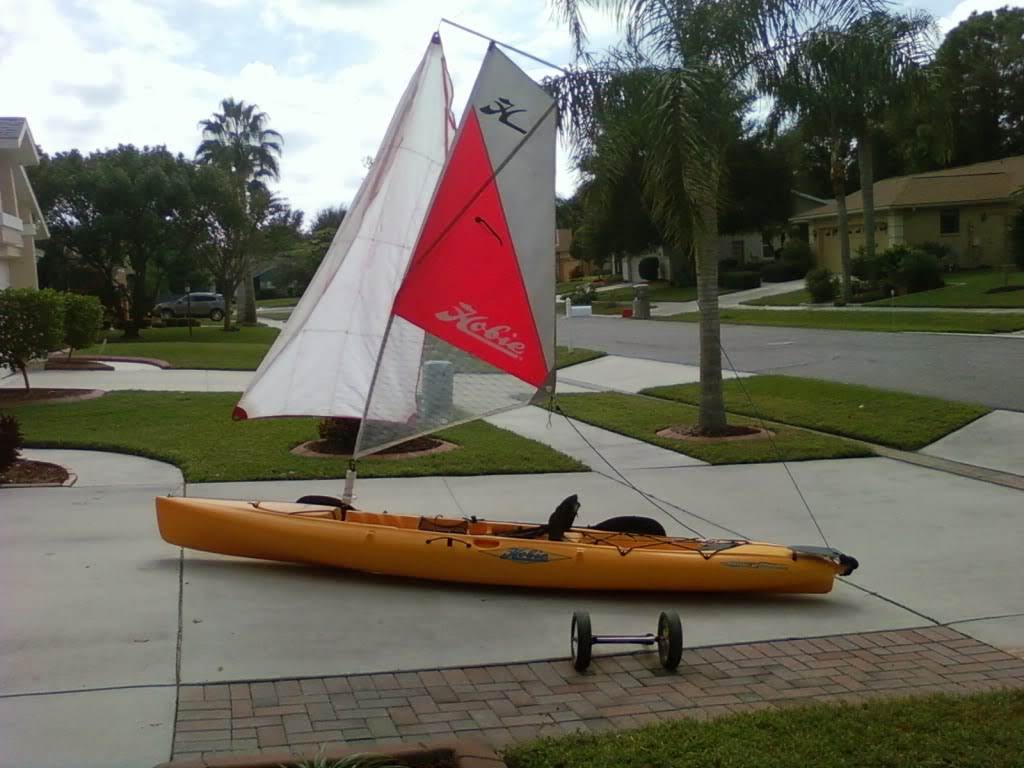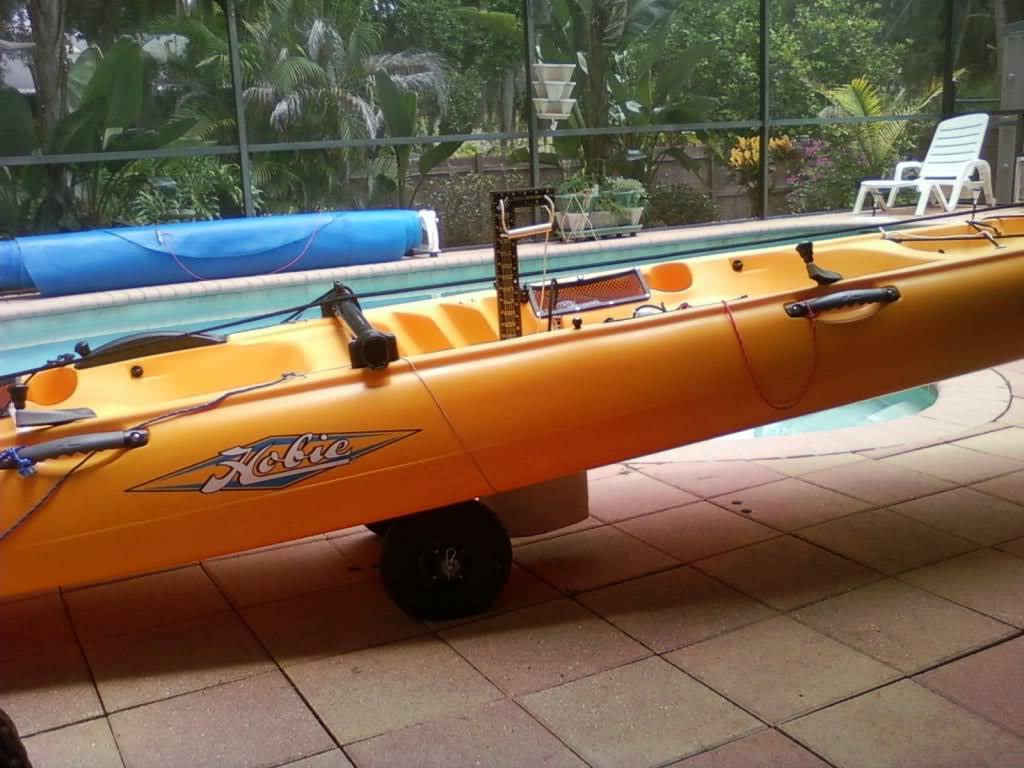You gotta realize we were out there trying to surf on our kayaks, just for fun, (totally insane thing to do). If the conditions were right (on-shore-or parallel to shore high, (around 15 mph) winds), and nicely timed 3ft breakers rolling in from Mexico. Always a total blast, but very seldom successful, (you go over a lot).
I did find some old pics of some of the crap.
This is me sitting on the gunwale of one of the kayaks, with a keel weight installed, You likely don't need anything this extreme.

This is a pic kind of showing the torpedo concept, (no need to point the ends, just PVC caps work fine), We ended up running a single spectra front line in thru the mirage pocket on everything. The grey Hobie rudder line we ended up using is only 300 lbs test, (not 500).

This is one of our old Revo's, (we had two). You gotta be a little nuts to toss that spinnaker out in 15 mph winds, (lol, just saying).

This was our old Oasis, The snuffer sock didn't work out, and the keel weight idea (with the rubber hose), really sucked, we didn't use that boat much for surfing, (the Revo's were way more fun).

This is a pic of our Tandem Island kayak sailer, (best and fastest boat we ever owned), we ended up selling everything else and only used the Islands for the last 8 yrs. Yea you can surf with this setup, (I don't advise getting too extreme, we didn't do much kayak surfing with this setup), the thing literally screams, (that 33 sqft wing sail is as powerful as the regular 90 sqft mainsail). When we get the itch to go out kayak sailing, this was our favorite setup, (had to have the keel 50 lb weights, with that 17 ft tall wing sail).

This is the swinging keel weight setup we used on our TI's. The thing fit in a mirage pocket, and was adjustable up and down, we could also swing it a foot or so from side to side to help balance the boat. When not using, just pull the mirage plug. We ended up with 50 lbs, (the TI is a really big boat). Yea of course we tried it with the regular Hobie 90sqft furlable TI regular mainsail, (fine in really low winds, but you go swimming quite often in higher winds, (has to do with the weight and height of the main mast). However if I had an AI mainsail, I would have been using the heck out of it.

Obviously this is all crazy nonsense, but sure was fun. I'm too old now, and don't have it in me anymore, to do that extreme stuff.
Maybe the weighted keel idea, can help the offshore guys, (title of thread). No need to do any of the other crap.
When not using the keel weights, we just stored them inside the hull, (helped a little keeping the CG lower on the boat), that may be all someone needs.
FE







